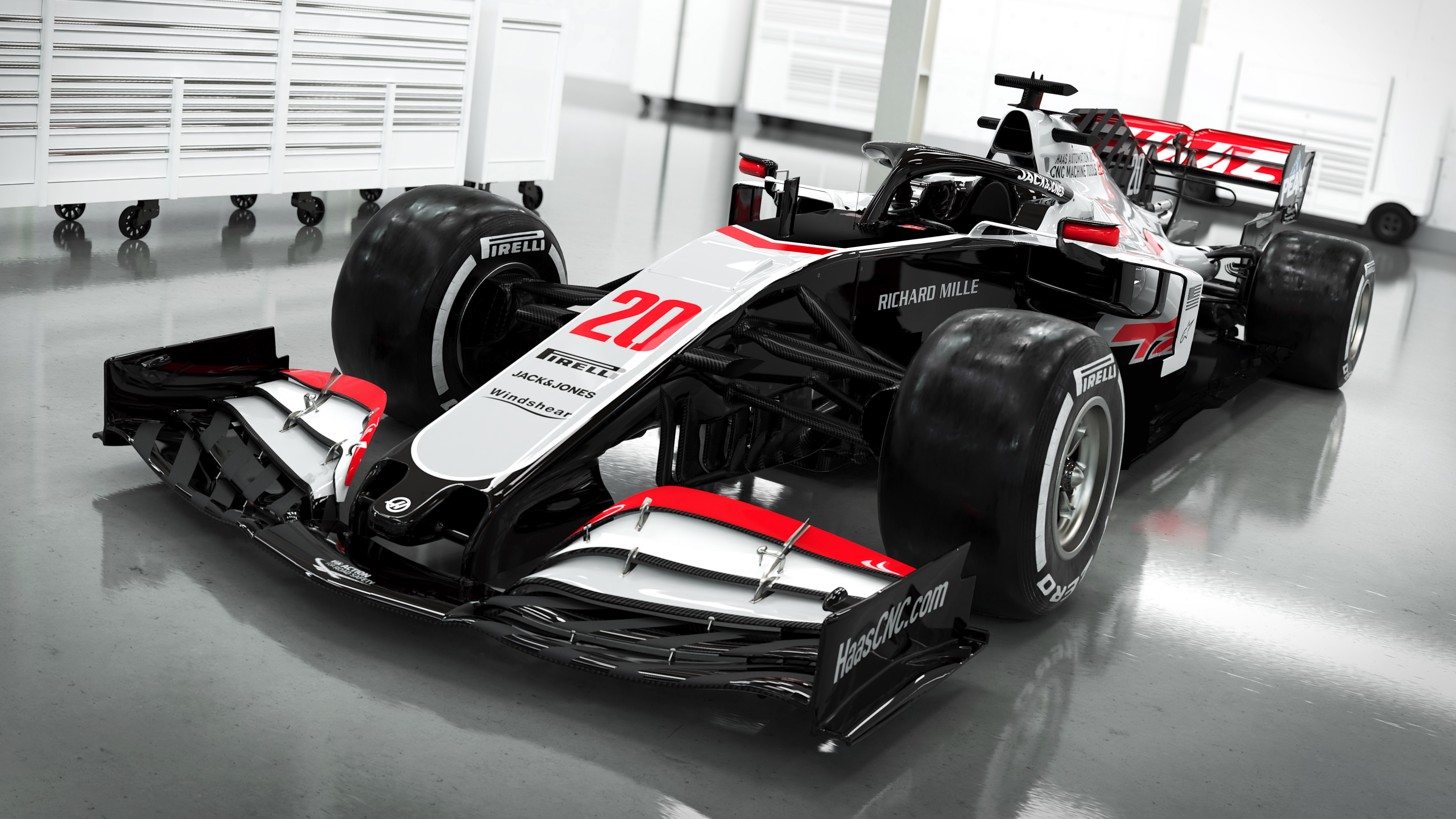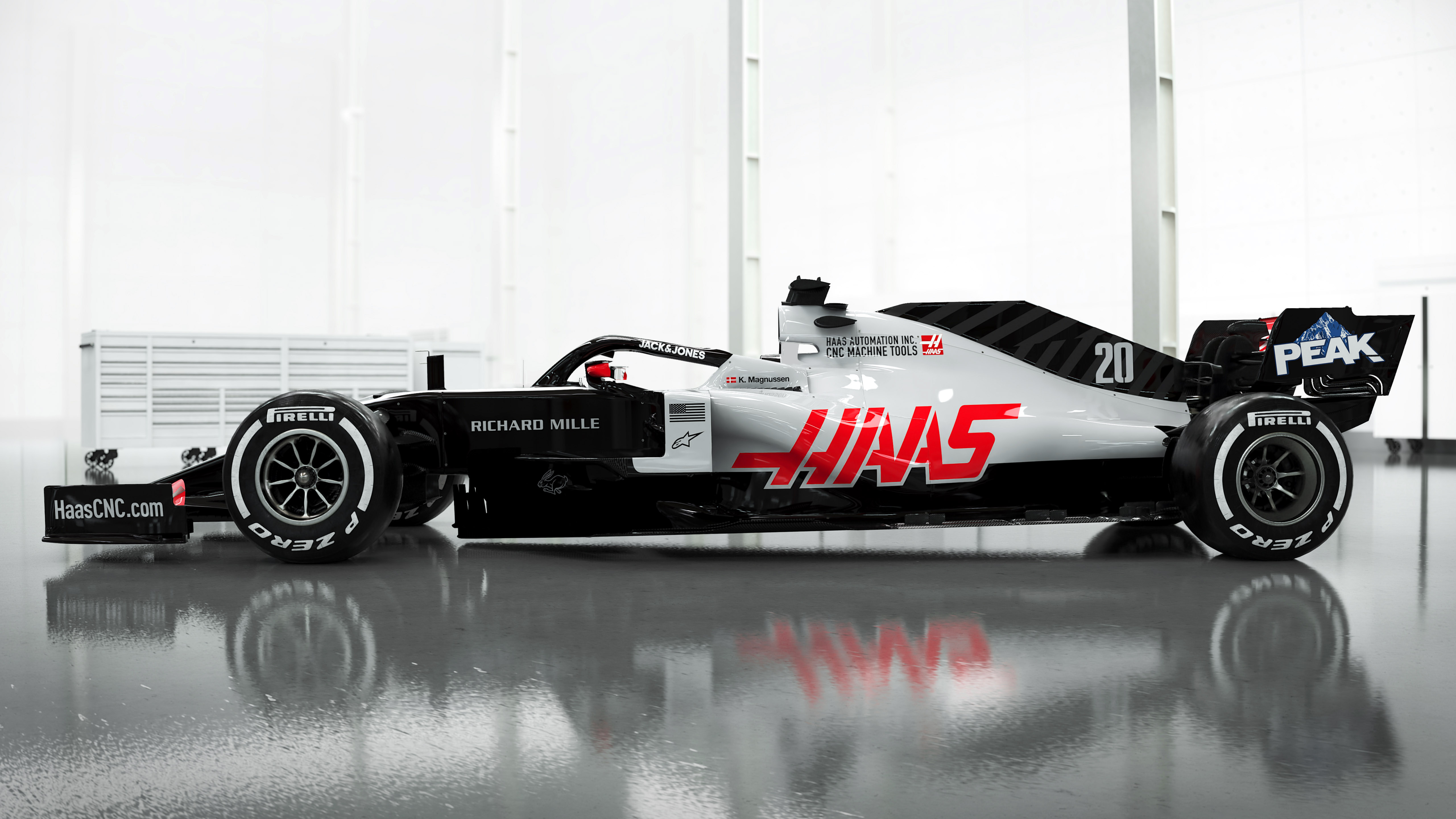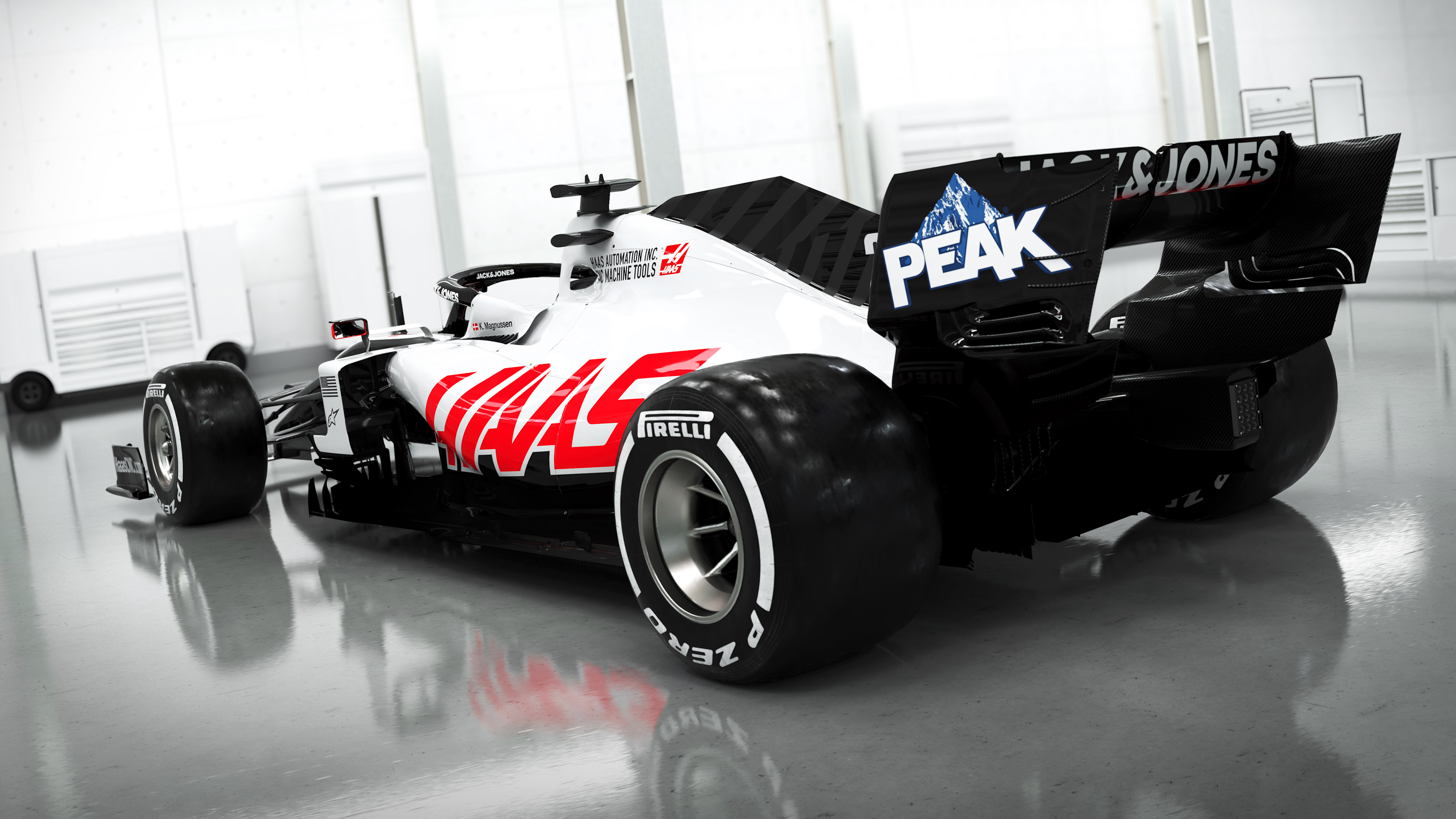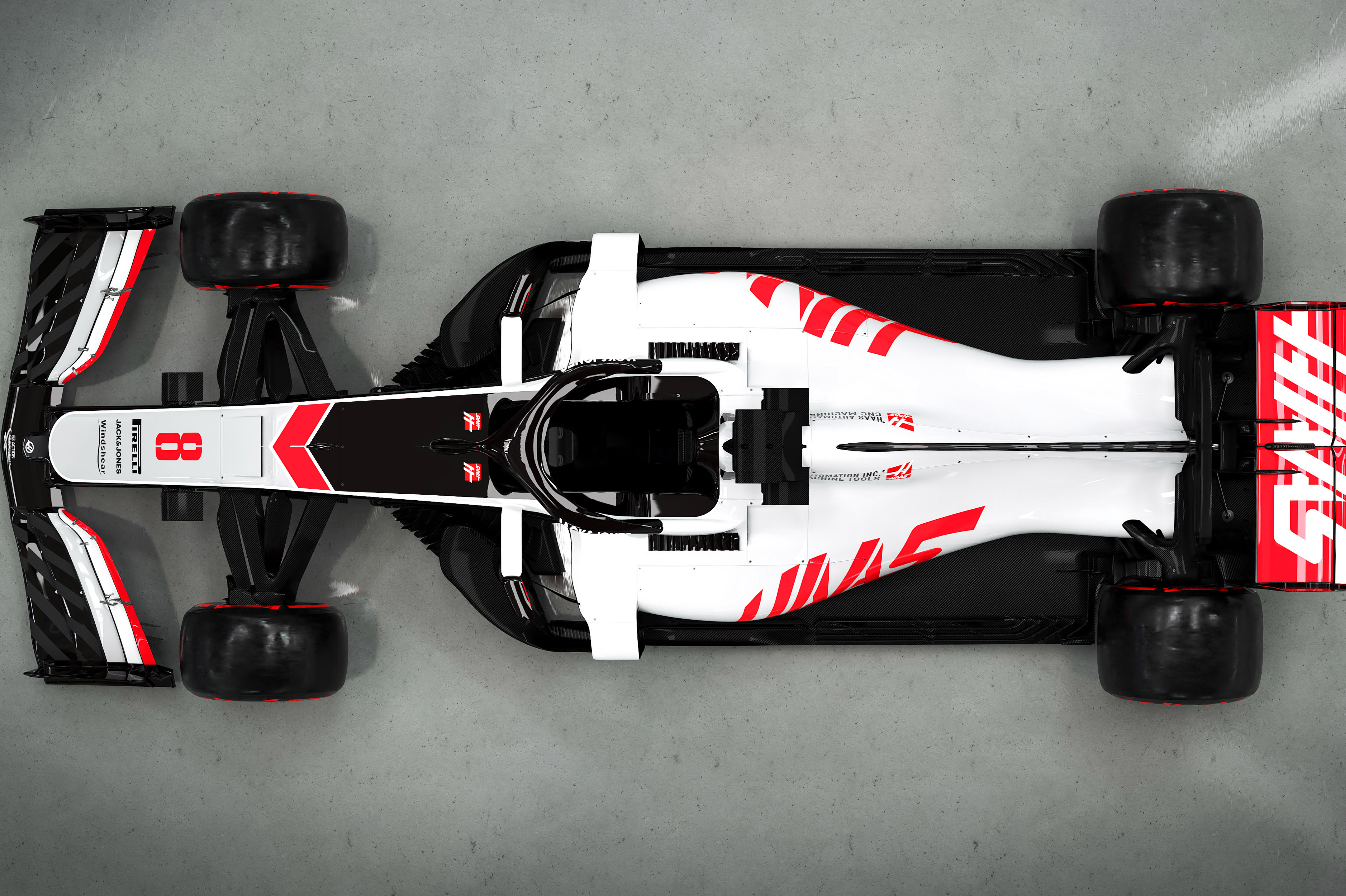Up Next

The Haas VF-20 is our first look at a 2020 Formula 1 car, and it’s no surprise to see that the front wing is the first area to draw the attention.
While launch-specification front wings are often very different to what we see on track, there is a change in an area that did create problems for Haas last year and led to it struggling over race stints and down in ninth in the constructors’ championship.
Haas continues to take many of the so-called ‘non-listed parts’ from Ferrari such as the gearbox and suspension components, but in conjunction with Dallara it has to produce many of the key performance areas itself – including the aerodynamics.

It seems Haas has tried to find a middle ground between the loaded inboard and loaded outboard concepts having gone with the latter last year. The outer ends sweep downwards to induce more outwash which, with the help of the bargeboards, keeps that flow far enough outboard to prevent it breaking the underfloor’s seal.
This is especially important in slow and medium speed corners. If you are running a high-rake car (high rear ride height, lower at the front) which they do, without the right balance of front wing load and airflow to ensure the underfloor performs it’s very easy to have a car that at high rear-ride heights – so in slow and medium speed corners – hurts the rear tyres by sliding too much.
Last year, this was exactly what happened to Haas, with the loss of rear downforce in the lower-speed corners at the heart of the problem. The increase in outwash should also tackle another problem of 2019, that of the car having too much drag and struggling on the straights.
Haas has also switched from a wide oval to a triangular airbox intake shape, similar to what Ferrari had last year. This area also contains the main rollover bar structure and making it triangular is more efficient in terms of weight. Being that high up, weight is very important and saving a few grams has a reasonable effect on the car’s centre of gravity.
Gone are the days when this airbox intake was just about taking in air for the engine. Now, there are so many cooling requirements that the airflow through this opening is also being used to feed. Haas might also have moved some of radiators lower down so use the sidepod inlet’s airflow to cool these. Again, this will lower the centre of gravity.

The front-wing elements have fairly similar chord lengths, so it should be easier to control the front-wing stall characteristics when it gets closer to the ground. At high speed, you want the front wing to stall otherwise you have too much front downforce and the car is too pointy, which destroys the rear tyres. If the stall is too big, it makes the car inconsistent with the risk that it will start porpoising (the front bouncing up and down) as the load is released and then re-released.

Haas is running what can be called a reasonably high-rake car. There are others out there like Red Bull that push this concept to the maximum, while Mercedes is more old-school running a fairly conventional rake. Again, there is a happy medium in there somewhere that will satisfy the car’s requirements both aerodynamically and mechanically in the slow, medium and faster corners.
It’s not just about increasing the rear ride height, the basic car concept and development direction needs to be in line with that requirement, so it needs commitment from the get-go.

It’s difficult to see much detail on the bargeboard or floor area, but I expect there will be lots of flips and flicks. It’s OK having all of these small details, but they must work together as one.
As an example, the slots down the floor in front of the rear tyre are defined and totally dependent on how the airflow comes around the front tyres. When you consider that the front tyres are always on the move with varying steering lock, this is no easy task to define and keep working consistently.

Haas appears to have moved the rear axle further rearwards. Last year, Haas already moved the front axle forward. Doing that and leaving the rear axle alone increases the distance between the front wheels and the sidepods, improving the airflow in this area. It also reduces the mechanical vertical and lateral load on the front axle and increases it on the rear axle, which stabilises the car under braking.
Leaving the front axle alone and moving the rear axle rearwards will have the opposite effect – no change on the aerodynamics around the leading edge of the sidepods but potentially improving the interaction of the Coke bottle and rear tyre. It also increases the length of the underfloor, which should increase downforce.
The mechanical vertical and lateral load on the rear axle will also be reduced. This makes it perhaps not so good under braking, but it will reduce the lateral load on the rear tyres in slow and medium speed corners before the aerodynamics become the dominating factor. Given Haas had a problem with overworking the rear tyres, this is a good step forward.
The overhead photograph is ideal to show the basic body airflow. The airflow goes across and under the front wing, mostly inside the front tyres and under the raised nose and chassis – but crucially connecting up with the flow that comes around the outside of the front tyres.
Then, it’s pulled into the leading edge of the underfloor by the bargeboards. Once there, it’s all down to the power of the diffuser at the rear of the underfloor. It pulls that flow under the floor, increasing its speed and, in turn, downforce created under the floor.
Some of this flow from the front of the sidepods is pulled around the undercut side pods by the Coke bottle. Getting this right is important from an aero consistency point of view. The airflow through the radiators is not linear with speed and when it there is more airflow than can pass through them, more spills around the sides of the car so it is important to manage that.
You don’t really want too much airflow being forced around the outside of the rear tyres as this just makes the car think it’s wider and increases drag for very little benefit. The Coke bottle aggressiveness handles this and manages the flow inside the rear tyres. Then it is about connecting the flow coming out of the diffuser to the low pressure behind the rear tyres.
Get all this working as one and a small change on the rear diffuser detail can influence the front wing performance. Get it wrong and you can change details until you are blue in the face and nothing will respond.
Haas has clearly made changes with this car to correct the problems of last year, which appeared to start with the loaded outboard front wing and its struggles to control the airflow to the rest of the car. The key question is whether it has fully understood the problem and that the changes made have the correct impact.
What is clear is that Haas wasn’t far off. At high speed, when the rear aero worked, and often in qualifying trim with fresh-tyre grip, the car was capable of being at the front of the midfield. If these changes work, it can be right back there.




